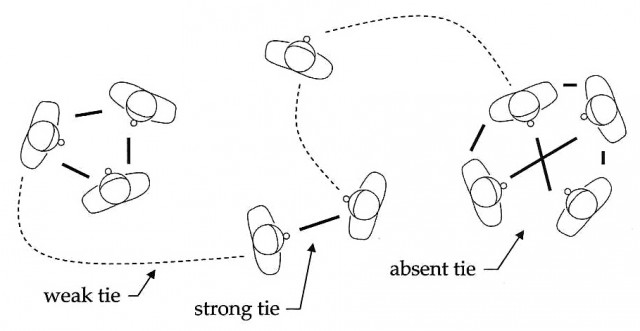Hello there,
If you can’t see yourself being friends with someone for life don’t refer to them introspectively as a friend even for one day.
This is a heuristic that has been my Northstar when forming relationships over recent times. It is valuable in the sense, that most of the hurt comes from temporary short-term ‘friends’ who we mislabel and as a result assign unrealistic expectations.
A potential downside is missing out on people, who we likely met in a limitive context, displaying a shadow of themselves, which in turn led us to miscategorize.
Still, I hold tight to this heuristic, since it works a charm 8 out of 10 times and enforces the importance of social compartmentalization.
It even becomes exponentially more valuable, because it teaches us where to draw the line between friends and acquaintances. In the process, leaving room to assign expectations from both networks.
The social process from acquaintance to friend is an inter-determinate period that is more of an art rather than a science and the few with the know-how of how to work the weak ties excel.
Here we go!!
Power of Weak Ties
Social network theory views social relationships in terms of nodes and ties. Nodes are individual actors or collective of individual actors such as families, organizations, nations, and ties are the relationships between the actors. Therefore, a social network is a map of all of the relevant ties between the nodes.

Granovetter in his landmark paper, “The Strength of Weak Ties” introduced the concept of ties and their significance to a social network.
Strong ties = emotionally close, multiple bases for interaction, mutuality, kinship, traditional community ties, bonding social capital (strong ties in small groups) – family/friend, volunteering help, invited home —>
Weak ties = emotionally distant, thin trust, only know online, bridging social capital (weak ties between many people) – workmate/acquaintance, paid to help, not invited home.
Absent ties = lack of a relationship and if existant no substantial significance, a ‘nodding’ relationship between people living on the same apartment block.

Trust, norms, and networks are the dominant distinguishing factors between the ties. In simpler words, social capital.
Social capital is to networks what money is to economies. And just as money’s value goes up and down in relation to things and in relation to different money, social capital also includes reputation, popularity, and trustworthiness, which can increase or decrease in value relative to the network around it.
It is therefore no surprise that we consolidate around our strong ties since they are a good support network.
Homophily principle: similarity breeds connection.
The strong tie networks provide a safe haven governed by trust, conformity, and loyalty. All desirable and vital part of the value adds of our social network.
On the flip side, it introduces redundancy in knowledge, activities, and friend sets.
Heterophily principle: love of the different.
More often than not, this sets us up to lose sight of the enormous benefits of weak ties.
Weeds are flowers, too, once you get to know them. —A.A. Milne (Winnie-the-Pooh)
While the average person focuses on the inner circle as the sole epicenter of value, the super connectors, mavens, influencers, influential politicians seek to exploit the weak tie relationships.
How we engage the weak tie is a key differential because it brings us non-redundant information across structural holes. This is how we inhabit more worlds than we live in.
Best Stuff I Read
1. Time Horizons
“If everything you do needs to work on a three-year time horizon, then you’re competing against a lot of people. But if you’re willing to invest on a seven-year time horizon, you’re now competing against a fraction of those people, because very few companies are willing to do that.” ― Jeff Bezos
2. The parable of the Taoist farmer.
The Taoist farmer has one horse, and the horse runs off. The villagers lament his misfortune, and he replies “We’ll see.” The horse returns with four more horses, and the farmer is praised for his good luck. He replies, “We’ll see.” His son then attempts to break the horses, and breaks his leg. Again, the villagers console him for his bad luck. The reply again is “We’ll see.” Then the army comes and conscripts all the able-bodied young men, but the farmer’s son is spared.”
What I’m Watching
A filmmaker forges an unusual friendship with an octopus living in a South African kelp forest, learning as the animal shares the mysteries of her world. He visits the octopus every day for a year, and what he learns from the octopus is oceanic.
If you’re enjoying the Bits by Muigai newsletter, I’d love it if you shared it with a friend or two. You can send them here to sign up and get a feel the past editions.
Always feel free to shoot me an email at muigai@solomonmuigai.com with questions, critiques, half-formed ideas with a need of jack to bring to life or just to say hey.
Until next Saturday, have a happy weekend.
Solomon Muigai.
